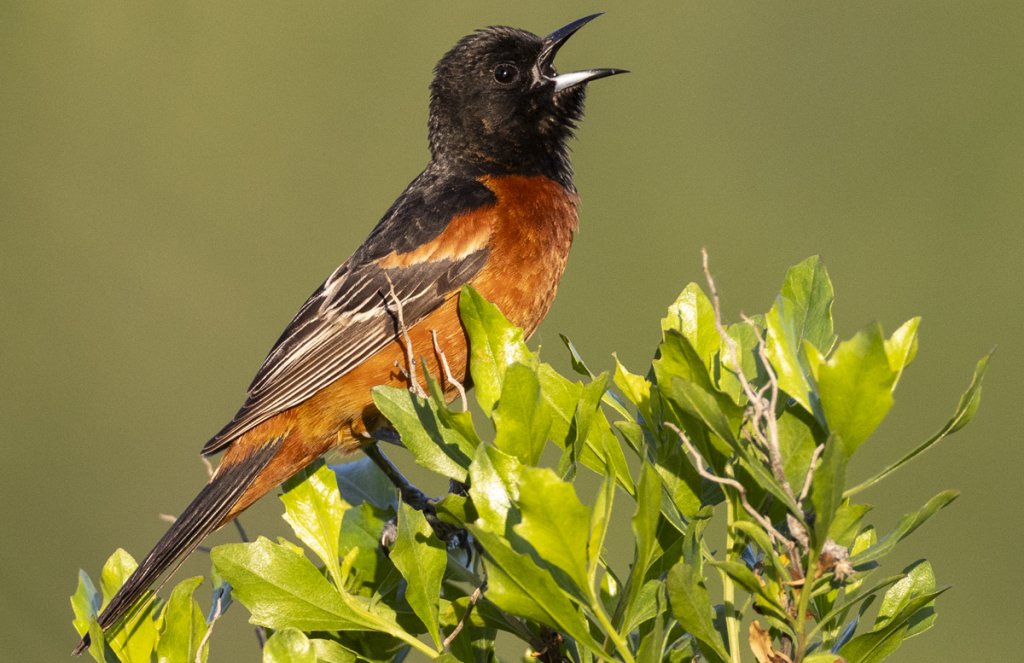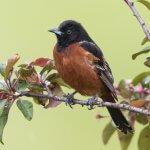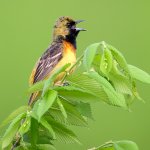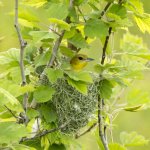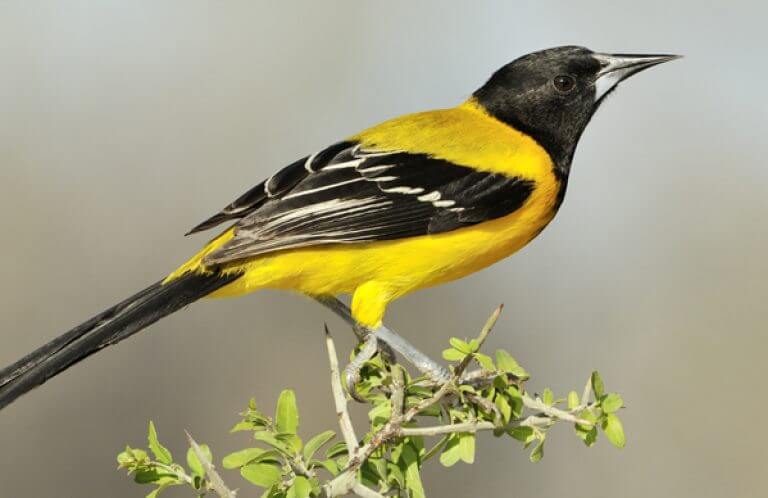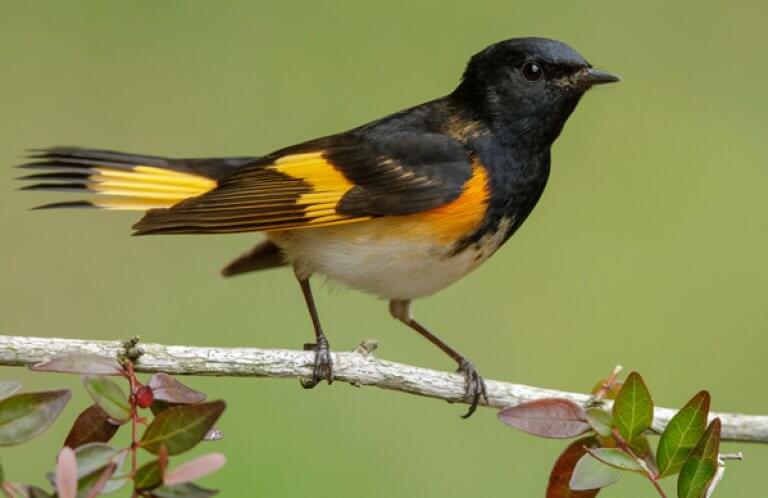About the Orchard Oriole
A mature male Orchard Oriole is a handsome sight, with rich chestnut underparts set off by black upperparts, head, and tail. Its black wings are accented by bright white wing bars. Female and juvenile Orchard Orioles are a more subdued yellowish-green. This is the smallest North American oriole species and is often overlooked in favor of its flashier cousin, the Baltimore Oriole. However, it's an interesting bird in its own right.
The Orchard Oriole's name hearkens back to an earlier time in American history, when this species often nested in orchards on small family farms. One of its folk names is orchard starling. Although many of these small farms have disappeared, the Orchard Oriole's cheerful song can still be heard in suburban settings throughout the eastern U.S.
Part of a large genus, Icterus, which includes other New World oriole species such as the Audubon's, Bahama, and Yellow Orioles, the Orchard Oriole's species name, "spurius," derives from the Latin word for “illegitimate.”
Mistaken Identity
Early ornithologists found many unique birds in the New World and made more than a few mistakes in their first attempts to classify them. The Orchard Oriole was one of these early identification errors – it was mistaken for a female Baltimore Oriole. This error was eventually rectified, but the Orchard Oriole's species name refers to its original mistaken identification.
Songs and Sounds
The Orchard Oriole's song is a loud series of musical whistles, interspersed with harsh notes. It calls include in a rapid chatter, used as an alarm.
Listen to its song here:
Call:
Breeding and Feeding
Basket Bird
Both male and female Orchard Orioles employ a variety of courtship moves to attract a mate, including head and tail bobbing and “begging” (fluttering wings while trilling). The male also displays in a slow, head-and-tail bobbing flight.
Adult male Orchard Orioles attract most of the females, but second-summer males, which look like adult females with the male's black bib, are also contenders in the mating game. Despite lacking the rich chestnut-brown colors of a mature male, these young males are sexually mature and sometimes breed successfully. This phenomenon, known as delayed plumage maturation, can be seen in many other songbird species such as the American Redstart.
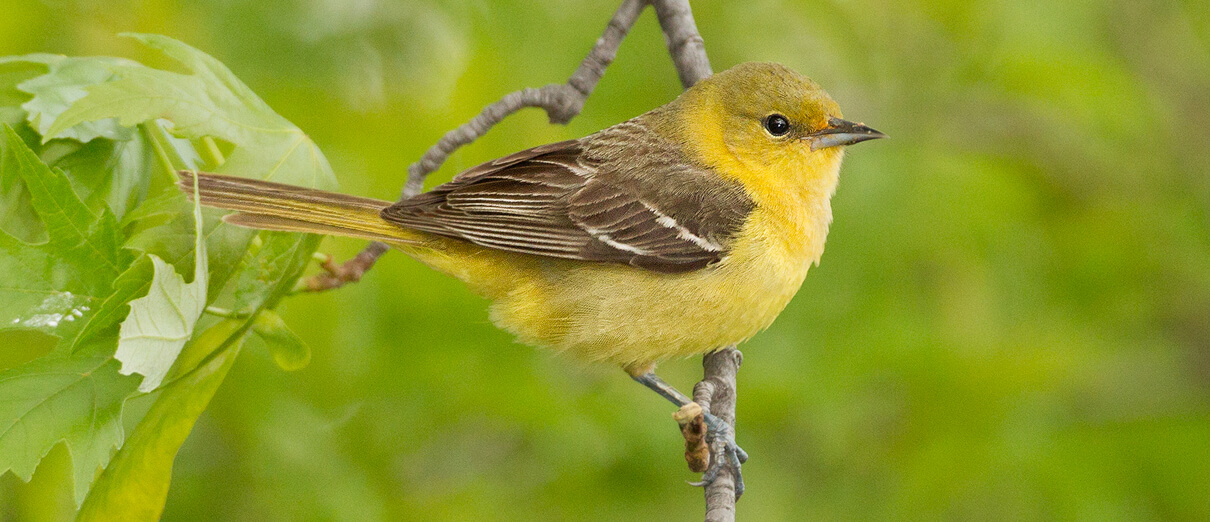
After mating, the female Orchard Oriole weaves a pendulous, cup-shaped nest out of long pieces of grass, lined with softer material. She suspends it from the fork of a horizontal branch, usually in a small tree. After the nest is completed, she lays 4-6 eggs, which she incubates for roughly two weeks. During this time the male brings her food and guards the nest. Both parents feed chicks after hatching. The young fledge in another two weeks, then remain close to the nest in dense habitat, where their parents split the brood, each continuing to feed and care for the chicks for the next week or so.
Less territorial than many songbirds, the Orchard Oriole may nest in loose colonies. It will also nest in close proximity to Eastern Kingbirds, sometimes even in the same tree. This may benefit the oriole, as the more aggressive kingbird will chase away potential predators and nest parasites such as the Brown-headed Cowbird.
Nectar Nabber
Like many songbirds, the Orchard Oriole is an omnivore, feeding upon insects and spiders, fruit, seeds, and nectar, depending on the season. It sometimes visits hummingbird feeders for nectar, and is the pollinator for several tropical plant species, which it feeds upon during the winter.
Lacking the specialized long tongue of a hummingbird, the Orchard Oriole takes nectar from long funnel-shaped flowers by cutting a slit at the flower's base with its beak, a clever workaround known as “nectar robbing" which is also used by other species such as the Cape May Warbler and the ‘Anianiau.
Region and Range
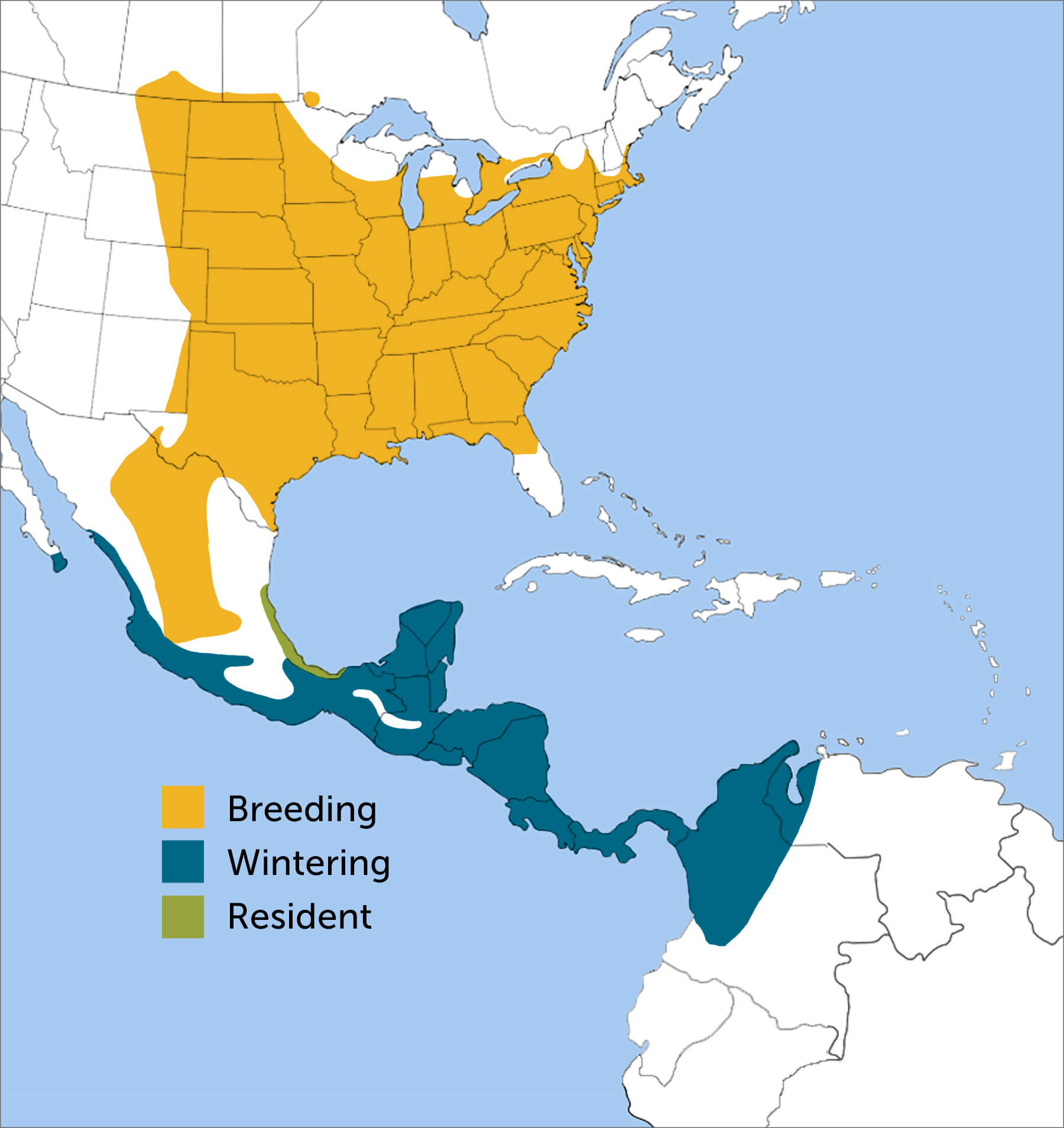
The Orchard Oriole breeds in from southern Canada south through the eastern/central U.S. and into central Mexico. Its winter range extends from mid-Mexico to Colombia and Venezuela. It is unbothered by human proximity, and readily nests in parks, suburbs, and agricultural areas.
Two subspecies of Orchard Oriole are recognized; one, found off of the Caribbean coast of Mexico, is sometimes considered a separate species, called the Fuertes's or Ochre Oriole.
Conservation

Help support ABC's conservation mission!
According to Partners in Flight, Orchard Oriole populations have decreased 23 percent over the last 50 years. The chief cause of this decline is habitat loss, particularly the destruction of riparian areas. Pesticide spraying in orchards and suburbs may also pose a significant hazard.
ABC has a number of programs in place to reduce threats to the Orchard Oriole and other birds. Learn how you can reduce pesticide use, find out more about our Cats Indoors program, which encourages pet owners to keep cats and birds safe, and learn about mitigating collisions, a common habitat for migrating birds.
Get Involved
Policies enacted by the U.S. Congress and federal agencies, such as the U.S. Fish and Wildlife Service, have a huge impact on migratory birds. You can help shape these rules for the better by telling lawmakers to prioritize birds, bird habitat, and bird-friendly measures. To get started, visit ABC's Action Center.
Living a bird-friendly life can have an immediate impact on migratory birds in the United States. Doing so can be as easy as adding native plants to your garden, avoiding pesticides, and keeping cats indoors. To learn more, visit our Bird-Friendly Life page.
American Bird Conservancy and our Migratory Bird Joint Venture partners have improved conservation management on more than 8.5 million acres of U.S. bird habitat — an area larger than the state of Maryland — over the last ten years. That's not all: With the help of international partners, we've established a network of more than 100 areas of priority bird habitat across the Americas, helping to ensure that birds' needs are met during all stages of their lifecycles. These are monumental undertakings, requiring the support of many, and you can help by making a gift today.





































